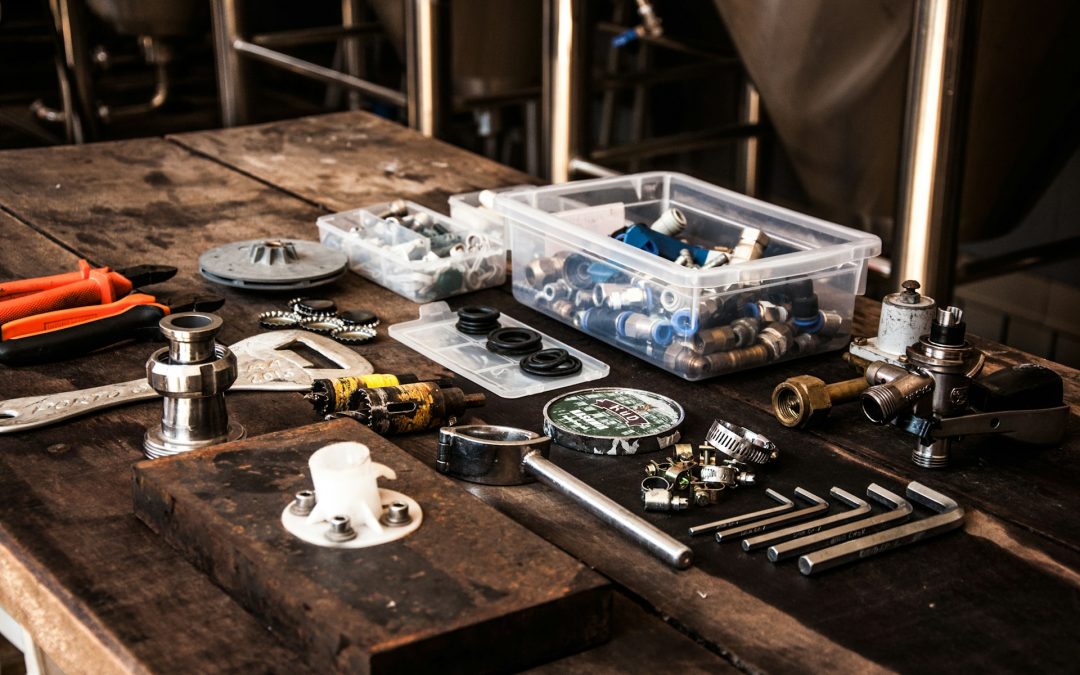Running a restaurant involves more than just good food and excellent service. Behind the scenes, plumbing plays a huge role in daily operations. Plumbing problems can disrupt your kitchen and dining area, leading to unhappy customers and potential health hazards. Knowing how to tackle these common issues can save you time and money.
Any restaurant owner or manager must learn how to solve these plumbing issues. Let’s dive into the most common problems and explore simple solutions to keep your restaurant’s plumbing in shape.
Clogged Drains and Grease Traps
Clogged drains are a common headache in restaurant kitchens. Food scraps, grease, and other gunk can quickly get stuck in pipes, causing slow drainage or complete blockages. This isn’t just an inconvenience—it can create a hygiene issue and slow the entire kitchen.
Grease traps are designed to catch fat, oil, and grease, preventing them from entering your drainage system. However, they can overflow and cause blockages if not regularly cleaned. To prevent this, schedule cleaning at least once a month. Check them more often if your kitchen produces a lot of grease.
Use sink strainers to catch food particles, and ensure your staff scrapes plates into the trash before washing. Pouring boiling water down the drains can also help dissolve minor grease build-ups. Avoid using chemical drain cleaners, which can damage your pipes over time.
Regular maintenance can make a big difference in keeping your drains clear. If you still face stubborn clogs, call a professional to tackle the problem with the right tools.
Leaky Faucets and Fixtures
Leaky faucets and fixtures might seem minor, but they can waste a lot of water and increase utility bills. Even a small drip can waste hundreds of gallons a year. Water leaks can cause slip hazards and contribute to wear and tear on sinks and counters.
First, turn off the water supply to the faucet to fix a leaking faucet. Next, dismantle the faucet to check the washers and O-rings. These small parts can wear out and need replacing. Faucet repair kits, which include all the necessary parts and instructions, are available at most hardware stores.
If your sink is leaky, check the plumbing connections and pipes. Tighten any loose fittings and replace worn-out gaskets. Persistent leaks might indicate deeper issues, like corrosion in the pipes, which will require professional help.
Keep an eye on faucets and fixtures in the kitchen and bathroom. Regular checks and quick fixes can save water and prevent more severe problems.
Low Water Pressure
Low water pressure can be a real headache in a bustling restaurant. It can slow down dishwashing, make cooking hard, and even affect the dining experience. Several factors can cause low water pressure, but addressing the most common ones can get things flowing smoothly again.
First, check the main water valve. It can reduce water flow throughout the building if it’s partially closed. Make sure the valve is fully open. Next, inspect the aerators on your faucets. These small screens can get clogged with mineral deposits, reducing water pressure. Unscrew the aerators and clean them thoroughly before reattaching them.
Another cause can be pipe leaks. Even small leaks can lead to a noticeable drop in water pressure. Check all visible pipes for drips and wet spots. Hidden leaks require professional help to locate and fix. The plumbing pipes might be corroded if your restaurant is in an older building. Rust buildup can restrict water flow.
Lastly, check for sediment buildup in your water heater. Over time, minerals can accumulate, especially if the heater isn’t flushed regularly. Flushing the heater can improve water pressure and extend the heater’s lifespan. If these steps don’t resolve the issue, it might be time to call a professional plumber for a more detailed inspection.
Sewer Line Backups and Odors
Sewer line backups are one of the most unpleasant plumbing problems a restaurant can face. They can cause foul odors, slow drains, and even pose health risks to staff and customers. Understanding the common causes and solutions can help keep your sewage system in top condition.
One of the leading causes of sewer backups is grease buildup. Over time, grease from cooking can accumulate and block the sewer lines. Ensure no grease or food scraps are poured down the drains to prevent this. Use strainers in sinks and clean grease traps regularly.
Tree roots can also invade sewer lines, especially if your restaurant is in an area with lots of trees. Roots naturally seek out sources of moisture, and tiny cracks in sewer pipes can be an entry point. If you suspect tree roots are the problem, professional plumbers can use specialized equipment to remove the roots and repair the pipes if needed.
Another cause could be a collapsed sewer line. This is more common in older buildings with aging infrastructure. If your restaurant experiences frequent backups, a professional inspection with a sewer camera can identify any damaged line sections.
To minimize the risk of sewer line issues, schedule regular maintenance checks and address minor problems before they escalate. Swift action can prevent backups and keep your restaurant running smoothly.
Conclusion
Running a restaurant means dealing with various plumbing challenges that can disrupt daily operations. From low water pressure to sewer backups and unpleasant odors, these issues can be frustrating but are manageable with the right approach. Regular maintenance, prompt attention to minor problems, and an understanding common causes can make a significant difference.
If you’re facing ongoing or severe plumbing issues, seeking professional help to ensure your systems are in top condition is best. A qualified plumber can diagnose and fix problems efficiently, preventing costly damage.
For expert plumbing repair, contact Midlothian Plumbing. Our team is ready to help with all your residential and commercial plumbing needs. Don’t let plumbing problems slow down your restaurant. Call Midlothian Plumbing today and keep your business running smoothly!


